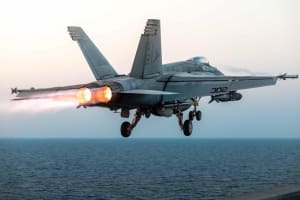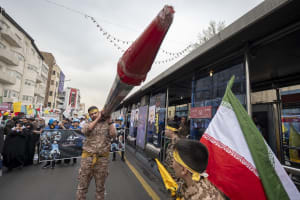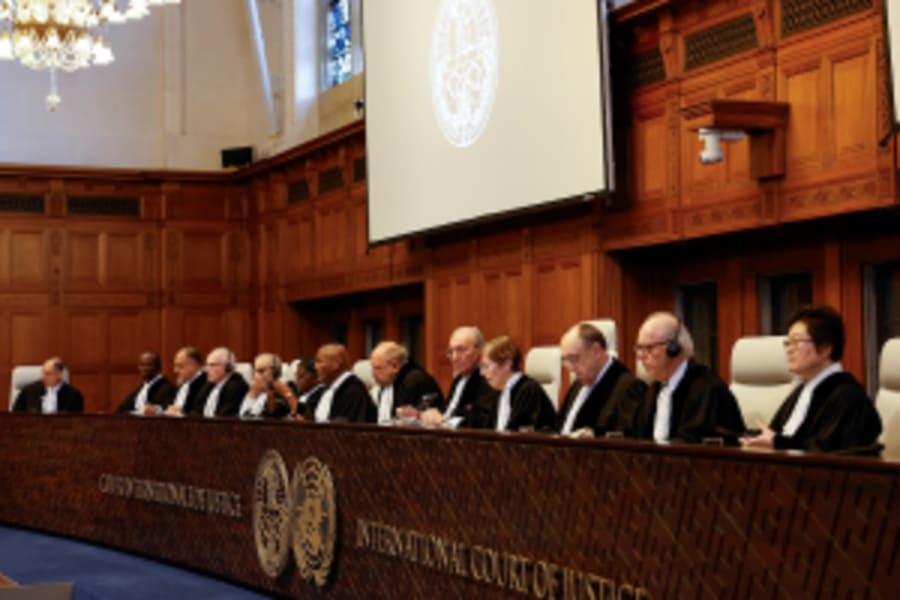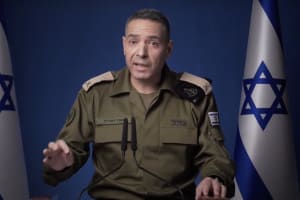Israel continues to degrade Hezbollah’s strategic weapons, strikes senior commanders in Dahiyeh stronghold
Israeli attacks severely cripple terrorists’ abilities to retaliate

In the shadow of the strike that decapitated Hezbollah by killing its leader of some 30 years, Hassan Nasrallah, the Israeli Air Force (IAF) has been conducting an unprecedented bombing campaign lasting over 48 hours, striking vital Hezbollah targets almost non-stop and severely crippling its once-vaunted military capabilities.
The strike on Hezbollah’s main bunker on Friday evening was the opening salvo, followed by large airstrikes in Hezbollah’s stronghold in southern Beirut’s Dahiyeh district for the first time since the conflict began last October.
Until then, the IDF had only conducted strikes in Beirut to carry out targeted eliminations, beginning with the killing of senior Hamas leader Saleh al-Arouri in January.
On Friday evening and into Saturday morning, the IDF systematically destroyed warehouses embedded in civilian areas that contained Hezbollah’s feared coastal missiles.
During the night of September 28th, the IDF attacked weapons warehouses in which Hezbollah stored coastal missiles. The missiles were apparently Iranian and/or Chinese-made and stored underground beneath residential buildings in the Dahiyeh area of Beirut. pic.twitter.com/EOb7ysKhKh
— Israel-Alma (@IsraelAlmaorg) September 28, 2024
“For years, Hezbollah has built and developed an array of coastal missiles originating in Iran… During the Second Lebanon War, in 2006 Hezbollah launched coastal missiles that hit the [Israeli ship] INS Hanit and killed fighters,” said IDF Spokesman Brig.-Gen. Daniel Hagari.
The IDF published pictures and mockups showing how the terror group hid these missiles under civilian buildings. After calling on residents to leave the area, the IDF destroyed them overnight.
The Air Force conducted several more waves of airstrikes in southern Lebanon and the Bekaa Valley, where many of the terror group’s strategic weapons were located. The IDF said it destroyed weapons storage facilities and rocket launchers.
צה"ל ממשיך לתקוף בשטח לבנון מטרות טרור של ארגון הטרור חיזבאללה.
— צבא ההגנה לישראל (@idfonline) September 29, 2024
מטוסי קרב של חיל האוויר, בהכוונת פיקוד הצפון, תקפו בשעות האחרונות עשרות מטרות טרור בשטח לבנון >> pic.twitter.com/tyBk2Clipb
Early Saturday morning, the IDF said it had eliminated the commander and deputy of Hezbollah’s south Lebanon missile unit, along with several other mid-level commanders. The unit had fired a surface-to-surface missile at central Israel last Wednesday, the IDF said.
The next IAF strikes again targeted strategic Hezbollah targets in Beirut, including production and storage sites for advanced munitions, and critical headquarters.
Later in the morning, the IAF briefly moved its attention to Syria, killing the leader of the Hamas branch in southern Syria, Ahmed Muhammad Fahd.
The IDF said he was killed while preparing to carry out more terror attacks, after having launched several rockets at Israel's Golan in recent months.
After conducting “dozens” of additional targets in the Bekaa Valley and southern Lebanon, the IDF said it had struck over 140 sites by noon.
⭕️Following precise intelligence, last night, the IDF intensified its operations against Hezbollah's force build-up through a series of targeted strikes on key weapon manufacturing sites. These included a facility used to produce and assemble missile and rocket launchers in… pic.twitter.com/GKOqwy3on3
— Israel Defense Forces (@IDF) September 28, 2024
More waves of airstrikes followed in the afternoon, including strikes on “central” weapon production sites, a production and assembly site for rocket and missile launchers and smuggling routes along the Syria-Lebanon border.
“Hezbollah has been working for many years in a systematic way to strengthen itself and increase its stockpile of weapons. As part of this method, weapons and components are transported from the east to the territory of Lebanon and brought to production sites, where they create a variety of weapons, including precision missiles,” the IDF stated.
This followed a series of strikes on Thursday targeting border crossings into Syria to prevent weapons transfers to Hezbollah.
צה"ל ממשיך לתקוף בשטח לבנון מטרות טרור של חיזבאללה.
— צבא ההגנה לישראל (@idfonline) September 28, 2024
בין המטרות שהותקפו, משגרים של ארגון הטרור חיזבאללה שכוונו לעבר עורף מדינת ישראל, מבנים בהם אוחסנו אמצעי לחימה ותשתיות טרור של הארגון >> pic.twitter.com/c2M8RLPPp1
On Saturday evening, the IDF eliminated another Hezbollah commander in the Dahiyeh district.
Hassan Khalil Yassin was a senior member of Hezbollah’s intelligence branch and was responsible for creating targets and providing them to the terror group’s rocket and missile forces.
Sunday saw no change or respite for Hezbollah. On Sunday morning, the IDF announced it had struck “hundreds” of targets on Saturday, and had already attacked “dozens” of targets, including launchers aimed at Israel.
🔴ELIMINATED: The Commander of Hezbollah's Preventative Security Unit and a member of their Executive Council, Nabil Qaouk, was eliminated in a precise IDF strike.
— Israel Defense Forces (@IDF) September 29, 2024
Qaouk was close to Hezbollah's senior commanders and was directly engaged in terrorist attacks against the State of… pic.twitter.com/dcvKLRkMbf
Shortly after, the army announced it had killed Nabil Qaouk, among Hezbollah’s most popular leaders, who was in charge of the group’s counter-intelligence efforts.
Throughout Sunday, the IDF continued bombing Hezbollah targets across the country. In the afternoon, the army announced that it had carried out targeted eliminations in Dahiyeh, the outcome of which was not yet known at the time of publication.
At the same time, Lebanese media reported that Israel had killed Muhammad Dahrouj in the Bekaa Valley. He was a senior operative of the Jama’a Islamiya terror group, which has fought Israel alongside Hezbollah.
Meanwhile, Syrian media reported that Israel attacked a target near Damascus after striking sites near the city of Homs earlier in the day.
The IAF simultaneously struck the Houthi port of Hodeidah in Yemen.
On Sunday evening, the IDF said it had completed another “extensive attack” in Lebanon, which saw dozens of warplanes striking some 120 Hezbollah targets, among them “significant headquarters of various units of the organization, military buildings and much infrastructure.”
לפני זמן קצר, צה״ל יצא לתקיפה נרחבת של מטרות צבאיות של ארגון הטרור חיזבאללה בהם שהו מחבלי הארגון.
— צבא ההגנה לישראל (@idfonline) September 29, 2024
במסגרת התקיפה, עשרות רבות של מטוסי קרב, בהכוונת אגף המודיעין, פיקוד הצפון וחיל האוויר, תקפו כ-120 מטרות צבאיות של ארגון הטרור חיזבאללה במרחבים בדרום ועומק לבנון>> pic.twitter.com/Or6iMSjoXI
The massive number of precise strikes seems to have severely hampered the terror group’s ability to retaliate against Israel, leaving it to watch helplessly as the Israeli Air Force continues to systematically dismantle its infrastructure.

The All Israel News Staff is a team of journalists in Israel.














